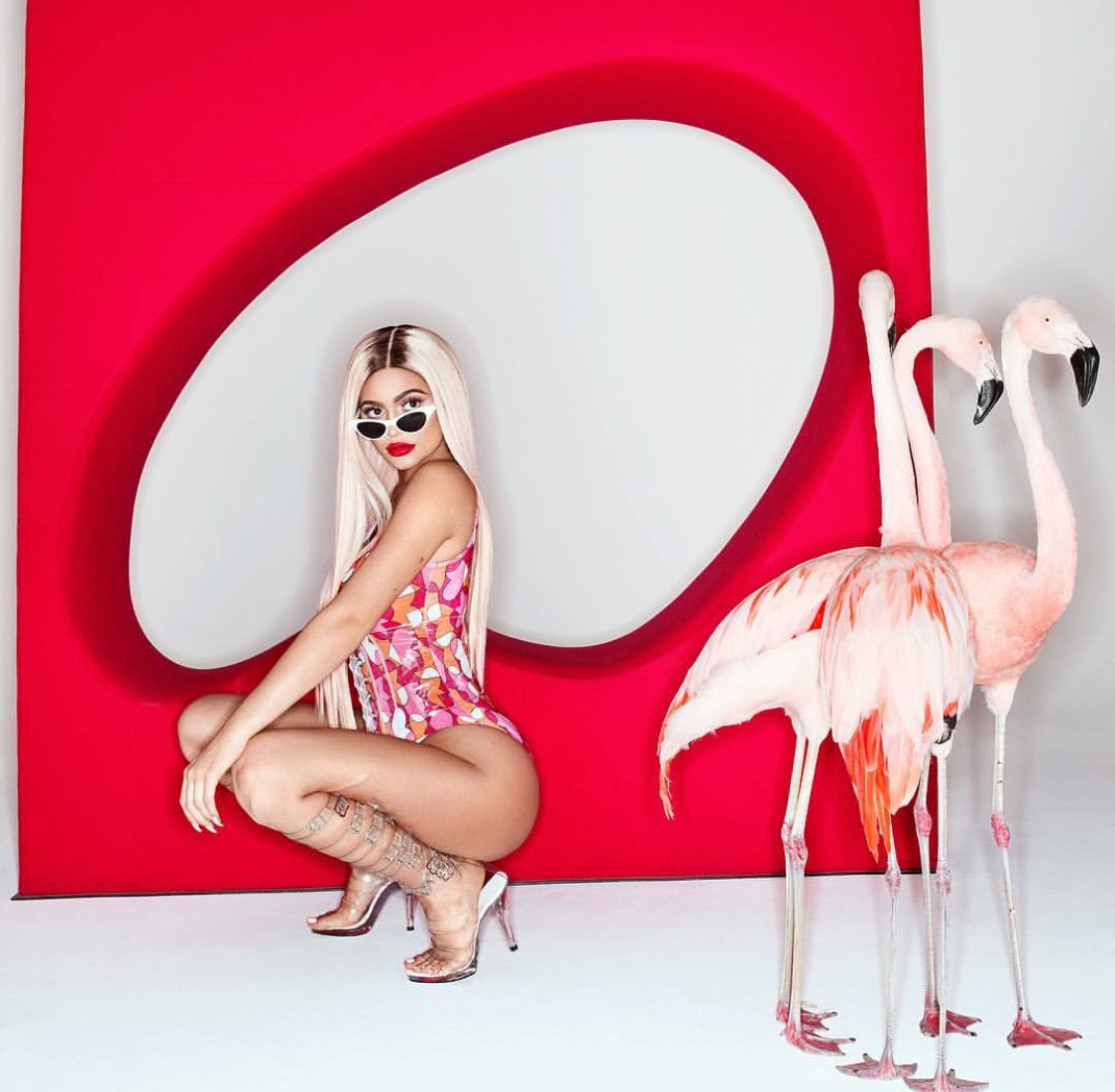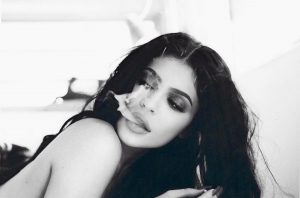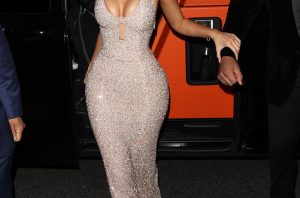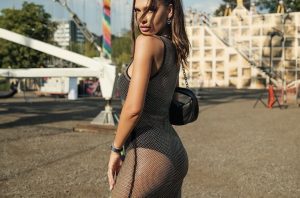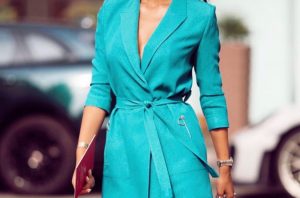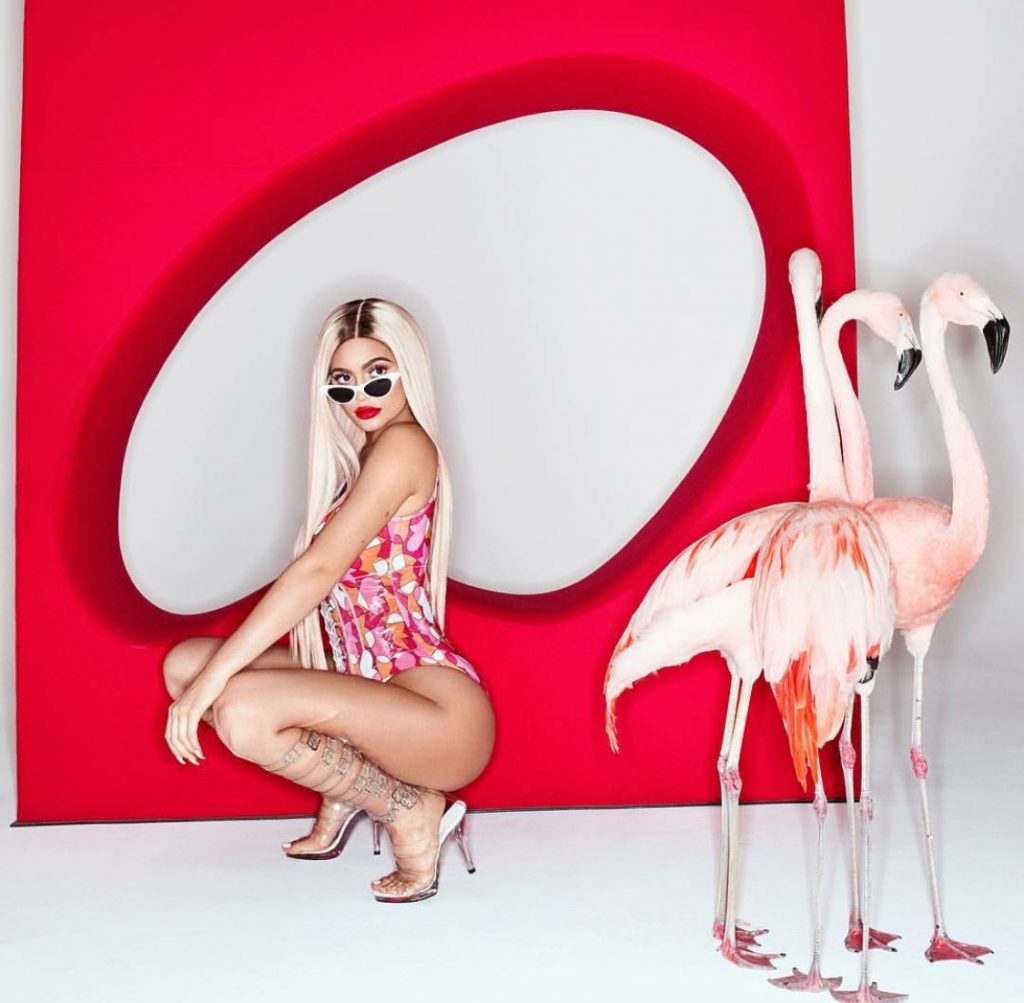
Tesa Pesic’s Instagram profile depicts a life best lived in artisanal coffee shops and indie boutiques, hanging around white brick exteriors with simple black-font lettering, letting your tousled hair down, and finding sublime beauty in tile-mosaic floors.
There are heart-shaped lattes and pastries artfully arranged on millennial pink tables; berry-filled bowls on reclaimed wooden benches; sunglasses and succulents on marble surfaces.
Then there are images of Pesic, a pretty 23-year-old with long brown hair that looks perennially beachy, goofing around with other pretty young things or posing solo in a trendy outfit (frayed jeans and off-the-shoulder tops) against a textured urban backdrop (preferably brick painted white or black, and with some trendy design flourish).
Pesic’s Instagram aesthetic is both twee and minimalist, nostalgic and modern—like the millennial pink color craze that has swept the design world. Her feed tells the story of a twentysomething girl-about-town’s life in New York City.
But instead of getting into the most scene-y parties, Pesic is uncovering the best Ramen spots in Williamsburg, the most whimsical clothing stores on the Lower East Side, and the best filter to showcase her minimalist Daniel Wellington watch against the cityscape, which she will post to Instagram with hashtags like #theartofslowliving, #what_i_saw_in_nyc, #liveunscripted, #seekthesimplicity, and—occasionally—#ad.
The Daniel Wellington watch, for instance, was gifted to Pesic by the watchmaker in exchange for brand exposure through so-called influencer marketing, and the #ad hashtag is a way of conveying that your content on Instagram or Facebook is sponsored.
Indeed, Pesic is one of thousands of “influencers” tapping into this ballooning industry, in which brands pay people with substantial social media followings to essentially advertise product on their personal Instagram, YouTube, Snapchat, and Facebook accounts.
Companies see them as relatable spokespeople for their merchandise, and some top-tier influencers have become brands themselves. Among the most famous is Chiara Ferragni, who parlayed fashion blogging into a career as a celebrity influencer with 10.1 million followers on Instagram, a lucrative contract as a global ambassador for Pantene, and a reported net worth of more than $12 million. Influencer marketing has led the digital marketing space for the last five years, but it has also evolved into a mini-economy that companies are banking on to make money in the digital age.
Big brands are collectively spending $255 million per month for sponsored content on Instagram alone, according to the influencer analytics firm Captiv8, which also estimates that Instagram influencers with upwards of 7 million followers make an average of $150,000 per sponsored post. And YouTube influencers with large followings earn up to $300,000 for a video partnership.
When influencer marketing began changing the digital advertising landscape in 2009, influencers struggled to produce enough content with any impact because the content-creating process was so manual.
“We knew for years that it outperformed all other forms of digital marketing,” said Francesca Chan, vice president of customer success and partnerships at TapInfluence, which connects influencers with brands for a percentage of their total earnings.
But the industry wasn’t able to prove it until last year, when TapInfluence helped conduct the first-ever major study that measured influencer marketing’s effect on retail sales.
Working in collaboration with Nielsen, TapInfluence’s case study showed that influencer marketing’s return on investment (ROI) is 11 times the ROI generated across all forms of digital media.
TapInfluence has seen the dollar amount marketers are paying their influencers jump 70 percent over the last two years. And since TapInfluence is one of the bigger influencer marketing agencies, with an opt-in marketplace of 65,000 influencers, they claim that growth percentage is representative of the influencer market at large.
We created a massive, scalable content engine where we have customers who are generating hundreds of thousands of dollars in sales through sponsored content,” said Chan, who credits influencer marketing for creating an economy for talent in the same way that Uber created an economy for drivers.
Where a beauty brand might spend $500,000 on a photo shoot for a digital banner ad, an influencer can collaborate with that brand on a $1500 Instagram post that is (seemingly) more authentic and reaches a much larger audience.
“Companies can buy the rights to that post and publish it on their own channels,” said Chan.
This is great news for companies trying to make big bucks in the digital age, and for a plugged-in generation of influencers who want to become internet-famous and earn a steady stream of income selling their own personality and taste.
But the pressure of telegraphing an always-sunny disposition has some influencers wondering whether they’re living a lie.
How do influencers find the sweet spot of success where they’re making money without selling out? How do they separate pleasure from business when the two are frequently interchangeable—when a holiday is also an Instagrammable opportunity to sell a sweater? How do they handle the anxiety of losing followers? And how do they confront the philosophical conundrum of selling the illusion of something as often as selling the something itself?
Zanita Whittington, a model-turned-influencer and creative director of an online community of influencer marketing experts, said she continues to struggle with the performative aspect of being a professional influencer.
“I think about it every day, really, but there was one period when I was so depressed from feeling like my life was spread out in different spaces and suitcases,” said Whittington, who grew up in Western Australia and began establishing herself as fashion insider and influencer back in 2008 when she launched her own blog.
Recently, though,“I sort of had an identity crisis. It’s a challenge to work through these rough patches when your career is about constantly feeding this insatiable audience, knowing that the moment you stop you’ll lose some of your relevance.” Even those at the very top of the influencer hierarchy feel pressure to meet their followers’ expectations. On her new Life of Kylie reality TV show, Kylie Jenner explained that she obsessively attends to her Instagram and Snapchat accounts “in order to stay relevant to the public…I have to entertain.”
During her depression, Whittington was careful to maintain her image as a cheerful, statuesque beauty to avoid disappointing her 331K followers. But in hindsight, she wishes she’d had the courage to be more honest.
“I can tell when some of the girls that I follow aren’t putting their heart into something,” she said. “It’s very hard to go through that when your life is so public.
“I’m in my thirties now and I don’t want to post so many selfies. I don’t want to post photographs of myself in a bikini all the time, but this is the game that I’m in and that’s the kind of thing that still gets the most engagement.”
Self Worth
While influencers like Whittington are paid in cash (anywhere from $3,000 and $10,000 per Instagram post), others like Pesic accept product as payment.
Instagram recently cracked down on influencers who have been less-than-forthcoming about their sponsored content. The FTC now regulates influencer engagement, so that influencers who don’t identify their content as “sponsored” may be called out for failing to comply with FTC rules.
Some influencer marketing platforms, like TapInfluence, are helping facilitate FTC compliance by giving influencers they work with detailed instructions on how to disclose sponsored content in a clear and conspicuous way. TapInfluence also takes pressure off companies who are still navigating the influencer marketing industry by carrying the legal and financial burden if influencers fail to distinguish sponsored content.
“We’ve created technology that searches for influencer disclosure, and when we don’t find it we alert the brand they’re working with,” said Chan. “We can then either withhold payment from influencers until they edit the offending post or require them to take it down.”
But most of the brands Pesic has worked with haven’t asked her to label her sponsored posts “#ads,” and most have not presented her with contracts listing other arduous requirements, like multiple posts across different platforms.
“Some specify whether they want the actual product in the shot, but others just say they want one Instagram post and give me creative freedom with it,” she said.
Pesic first got involved in the influencer universe two years ago, when she was studying film at Emerson College in Boston (she grew up in Serbia before moving to Massachusetts when she was 10) but was skeptical about what she wanted to do after graduating. She’d seen beauty bloggers’ YouTube tutorials and was interested in the idea of being a fashion and lifestyle influencer, so she started a fashion and lifestyle blog called “The Name’s Tesa.”
“I wish for this to be a place where you can get outfit inspirations, read up on the newest fashion trends, discover new music, new TV shows to binge watch, as well as uncover amazing places to eat at and get your morning coffee from,” Pesic writes under her blog’s “About” section.
She posted twice a week the year she launched it, organizing photo shoots for original fashion content and writing about her favorite coffee shops and restaurants. She also promoted and linked to her blog posts on her personal Instagram account, where she received brand collaboration proposals via direct message.
By 2016, she was devoting a substantial chunk of free time to growing her Instagram following, primarily by writing thoughtful comments on other influencers’ posts.
“You kind of develop relationships with each other this way,” said Pesic, who has nearly 7,200 followers, one recent morning over iced coffees at Blue Bottle, a trendy coffee chain.
She even met her current roommate through Instagram, a fellow influencer whom she lives with in Bushwick, Brooklyn. (“I loved her photos, so I sent her a direct message asking if she wanted to get coffee.”)
Pesic used to spend up to three hours a day commenting on other influencer’s posts and fostering Insta-friendships with them, the unspoken agreement being that they would “like” each other’s posts and garnish them with emojis and sycophantic praise.
The mutual back-scratching nature of these relationships extends to larger networks of group posting and messaging within “influencer pods,” Pesic told me, noting that a fellow influencer recently invited her to join a group Instagram chat called “Best Bloggers.” One influencer friend is in a WhatsApp group chat with 50 other influencers.
Another reliable way of increasing followers and engagement is to purchase bots that leave flattering comments all over your Instagram feed. It’s hardly uncommon among influencers, according to Pesic, who also insists she built a loyal and engaged following organically.
She’s spent considerable time researching the most relevant and strategic hashtags to attach to her posts, increasing the odds that they’ll be discovered by other Instagram users.
“The more generic the hashtag, the more difficult it is for people to find your content,” she explained. #Coffeeshop retrieves millions of posts, for example, whereas the more detailed #coffeeshopcorner and #coffeeshopvibes both retrieve roughly 200,000 posts.
Some of Pesic’s most oft-used hashtags include #theartofslowliving, #seekthesimplicity, #posttheordinary, #kinfolk, and #liveunscripted.
This means refraining from posting certain photos for weeks, often after laboring over them with popular editing apps like VSCO and Seedsnap.
The result is a carefully curated Instagram feed featuring photos of multicolored ice cream cones, brunches displayed next to lavender sprigs, and other things that fit the hygge-meets-hipster aesthetic associated with Kinfolk magazine.
Lest we not recognize the look and attitude she’s projecting, Pesic spells it out in accompanying hashtags like #kinfolk and #theartofslowliving, which the indie magazine celebrates in its visual and written content.
Beyond the irony of an ad-free magazine inspiring sponsored content on Instagram is the volume of content—more than 1.3 million posts, some sponsored and some not—tagged under #kinfolk.
The nature of this content is so predictable and reductive that a blogger launched The Kinspiracy in 2015, a Tumblr page where she amasses these formulaic, Kinfolk-inspired images.
That both small brands and behemoth companies—from an emerging, ethically-sourced fine jewelry brand to Whole Foods—seek out Pesic as an influencer shows how appealing her Kinfolk-y aesthetic is from a consumer-marketing perspective.
Pesic also falls into the “micro-influencer” category, an increasingly valuable player in the influencer marketing universe.
“Only a tiny fraction of content creators have more than a million followers, so there’s an opportunity for great creative growth beyond that expected set,” said Ryan Stern, president and CEO of Collectively Inc., another influencer-marketing power player.
Instead of investing tons of money in a couple of mega-influencers, getting 40 or 50 micro-influencers to promote your product in exchange for free merchandise is often a savvier marketing strategy.
“It used to be all about reach and celebrities, and now the terms ‘micro-influencer’ and ‘engagement’ are considered more important,” said Philip Brown, head of influencer marketing and brand advocacy strategy at ComeRound, a UK-based influencer marketing agency.
Influencers with smaller, more engaged audiences tend to wield more influence over their followers because they depend on them to grow, according to Brown.
“When their follower numbers surge, they engage less and start to be used more as a broadcasting medium,” he said. “Celebrity influencers grow their influence through awareness, whereas smaller influencers tend to do so through engagement and honest recommendations.”
Compared to celebrity influencers who earn hundreds of thousands of dollars per Instagram post and ensure every stylish step is documented from every possible angle, Pesic’s Instagram profile is relatively honest.
She maintains a balance of sponsored and unsponsored content on her feed. “It doesn’t feel authentic if it’s all advertisements and brand collaborations,” she said. “You want your life to be in there, too.”
While her goal as an influencer is to amass 10,000 followers and be paid in cash for her posts, she’s also pursuing a career in fashion PR.
“I think making this my full-time job would take all the fun out of it,” Pesic said. “Every time I went out I’d be obsessively thinking about all the photos I needed to take and have taken of me.”


